Modern-day Turkey (Türkiye), which is one of the world's earliest continuously inhabited areas, was the location of significant Neolithic sites such as Göbekli Tepe. The history of Turkey dates back to ancient times, with the region being home to several important civilizations. One of the earliest known inhabitants of the area were the Hattians, who lived in central Anatolia around 2000 BCE. The Hittites, another ancient civilization, established a powerful empire in Anatolia around the 17th century BCE. Over time, the region was inhabited by several ancient civilizations, including the Hattians, Hittites, Anatolian people, Mycenaean Greeks, Persians, and many others.
During the Bronze Age, the Mycenaean Greeks settled along the western coast of Anatolia, while the Phrygians settled in the central part of the region. Later, the Lydians established a kingdom in western Anatolia, and their capital, Sardis, became an important city in the ancient world.
In the 6th century BCE, the Persian Empire conquered Anatolia, which led to the rise of several powerful cities in the region, including Miletus, Ephesus, and Halicarnassus. Alexander the Great later conquered the Persian Empire, and after his death, Anatolia became a battleground for various warring factions.
The Roman Empire later conquered Anatolia, and the region became a center of Christian culture during the Byzantine era. The Seljuk Turks, who were originally from Central Asia, conquered Anatolia in the 11th century CE, and their empire lasted until the Mongol invasion in the 13th century CE. After the Mongol invasion, the Ottoman Turks established a powerful empire in Anatolia, which lasted until the early 20th century when Turkey became a modern republic.

Ephesus, an ancient Greek city located in present-day Turkey, stands as a testament to the rich tapestry of history woven across its millennia-old streets. Established in the 10th century BCE by Ionian Greeks, Ephesus evolved into a major center of trade and culture during the Classical and Hellenistic periods. Its strategic location near the Aegean Sea contributed to its prosperity, as the city flourished under various ruling powers Read more

Founded by the Greeks in the seventh century BCE, Istanbul's strategic location on the Bosporus Strait made it a coveted prize for various civilizations, including the Romans and Byzantines. However, it was Emperor Constantine the Great who, in the fourth century CE, elevated the city to imperial status, naming it Constantinople and establishing it as the capital of the Eastern Roman Empire. Read more

Established by Hattusili I around 1600 BCE, Hattusa became the political epicenter of the Hittite Empire, showcasing remarkable urban planning and architectural ingenuity. The city's defensive fortifications, featuring massive stone walls and imposing gates adorned with intricate reliefs, exemplify the military prowess and strategic acumen of the Hittites. Read more
Constantinople was founded by the Roman emperor Constantine the Great in 324 CE as the new capital of the Roman Empire, replacing the historic city of Rome. The city was strategically located on the Bosporus Strait, which connected the Mediterranean and Black Seas and provided a natural defensive barrier against invaders. Over the centuries, Constantinople became one of the most important cities in the world. It was a center of trade and commerce, as well as of culture, learning and also a hub of religious activity. During the Middle Ages, Constantinople was repeatedly attacked by foreign powers, including the Persians, Arabs, and Crusaders. However, it was able to withstand these attacks and remain a powerful city. In 1453 CE, Constantinople was finally conquered by the Ottoman Turks, led by Sultan Mehmed II. The city was renamed Istanbul and became the capital of the Ottoman Empire. Explore

This ancient metropolis, strategically positioned atop the Pergamon Acropolis, boasted grand structures that testified to the city's architectural prowess and cultural sophistication. The Altar of Zeus, an architectural marvel commissioned by King Eumenes II in the 2nd century BCE, exemplifies the Hellenistic aesthetic and sculptural finesse. Read more
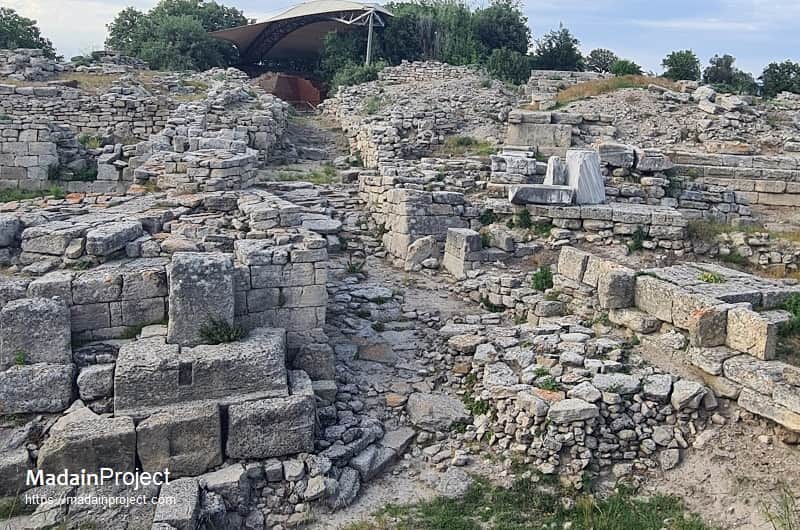
Ancient city known primarily from Greek literary tradition, especially the Iliad and Odyssey, where it is portrayed as the setting of the Trojan War. Historically, the name refers to a fortified settlement that existed during the Bronze Age in northwestern Anatolia and continued to be inhabited through the Hellenistic and Roman periods. The city became a central symbol in both ancient Greek and Roman cultural memory, with its legendary destruction forming one of the foundational myths of the classical world. Read more

Dating back to the Hellenistic period, Sagalassos gained prominence as a regional center with ties to the nearby Pisidian region. However, it was during the Roman era that the city reached its zenith, becoming one of the most prosperous and culturally vibrant urban centers in the region. Renowned for its monumental structures and civic planning, Sagalassos boasted a theater, agora, and the imposing Antonine Nymphaeum. Read more
The Mausoleum of Sultan Suleiman the Magnificent is part of the Suleymaniye Mosque Complex. Located in Istanbul, Turkey, it was built in the 16th century CE. The complex was designed by the famous Ottoman architect Mimar Sinan and is considered one of his greatest masterpieces. The mausoleum itself is a large domed structure with an octagonal base, built of finely carved white marble. The dome is supported by four large pillars and is covered in intricate calligraphy and geometric designs. The interior of the mausoleum is adorned with beautiful blue and white Iznik tiles, which are arranged in intricate patterns and designs. The walls of the main chamber are covered in intricate tilework and calligraphy, and the ceiling is decorated with beautiful frescoes and stained glass windows. The Mausoleum of Sultan Suleiman the Magnificent is a stunning example of Ottoman architecture and design, reflecting the opulence and grandeur of the Ottoman Empire at its height. Explore

At the summit of Ayasuluk Hill, the imposing Ayasuluk Fortress, also known as the Castle of Selçuk, stands as a sentinel overlooking the town and surrounding plains. Originally built by the Byzantines, the fortress underwent expansions and modifications under subsequent rulers, including the Seljuks and the Ottomans. The strategic location of Ayasuluk Fortress played a crucial role in the defense of the region throughout various historical periods. Read more

The city's origins date back to the fifth century BCE, with its prominence growing during the Hellenistic and Roman periods. Renowned for its exceptional marble craftsmanship, Aphrodisias became a hub for sculptors who crafted intricate statues and reliefs dedicated to various deities, including the city's namesake, Aphrodite. Read more

Founded in the eighth century BCE, Miletus quickly rose to prominence as a flourishing center of commerce, philosophy, and science. The strategic location of Ancient Miletus facilitated its engagement in the burgeoning trade routes of the Mediterranean, establishing Miletus as a hub for cultural and economic interchange with other Greek cities, as well as civilizations in Anatolia and beyond. Read more
The Lion's Gate is a notable architectural feature of the ancient Hittite city of Hattusa, located in present-day Turkey. This gate was built during the Hittite Empire's heyday in the 14th century BCE and served as the main entrance to the city's fortified inner citadel. The gate is named for the two large stone lions that flank the entrance and are believed to have been protective symbols of the city's gods. It is one of the several other gates bearing the carvings of the Lions. The gate features several architectural elements that were typical of Hittite architecture, such as the use of cyclopean masonry, where large, irregular stones are used to build walls, and the incorporation of relief carvings into the stonework. Overall, the Lion's Gate is a remarkable example of the Hittite Empire's architectural and artistic achievements. Explore

Founded in the 2nd century BCE by the Seleucid King Antiochus II, Hierapolis flourished as a Hellenistic and Roman city known for its thermal springs, monumental architecture, and vibrant cultural life. The architecture of the city's structures reflects the its cultural richness and served as a vibrant cultural life, and civic activities. The Necropolis of Hierapolis, one of the largest ancient burial grounds, showcases a plethora of elaborately decorated tombs and sarcophagi, offering insights into the city's funerary practices. Read more

Founded around 2000 BCE, recognized as one of the oldest continuously inhabited places, Harran became an important center of trade and commerce in the ancient world. Its strategic location along trade routes connecting Mesopotamia to Anatolia and the Levant contributed to its prosperity. Harran was inhabited by diverse populations, including Babylonians, Assyrians, and Arameans, and it later became part of the Hellenistic Seleucid Empire. The city also has historical and religious significance in the context of the Abrahamic traditions. Read more

The prosperity of ancient Sardis is often associated with its wealth in gold, and the legend of King Midas, known for turning everything he touched into gold, is linked to the Lydian capital. One of the prominent features of ancient Sardis was the acropolis, a fortified citadel situated on a prominent hill overlooking the city. The acropolis of Sardis boasted impressive defensive walls, the remnants of which still stand today, along with the ruins of the Temple of Artemis, a grand structure dedicated to the goddess of the hunt and wilderness. Read more
The Pergamon Altar was an ancient Greek monumental altar located on the Acropolis of the ancient city of Pergamon (modern-day Bergama in Turkey). The altar was constructed during the second century BCE and is dedicated to Zeus and Athena, the two most important deities of the Greek pantheon. The altar is famous for its elaborate and intricate friezes, which depict the Gigantomachy (the mythical battle between the Olympian gods and the Giants) and the Telephus myth (the story of the Greek hero Telephus). The friezes are considered to be some of the finest examples of Hellenistic art and are known for their dynamic composition, detailed carving, and dramatic depiction of figures in action. In the 19th century CE, German archaeologist Carl Humann led an excavation of the altar and had the friezes removed and transported to Berlin, where they were reassembled and put on display in the Pergamon Museum. The Pergamon Altar is considered one of the most important works of art from the ancient Greek world. Explore
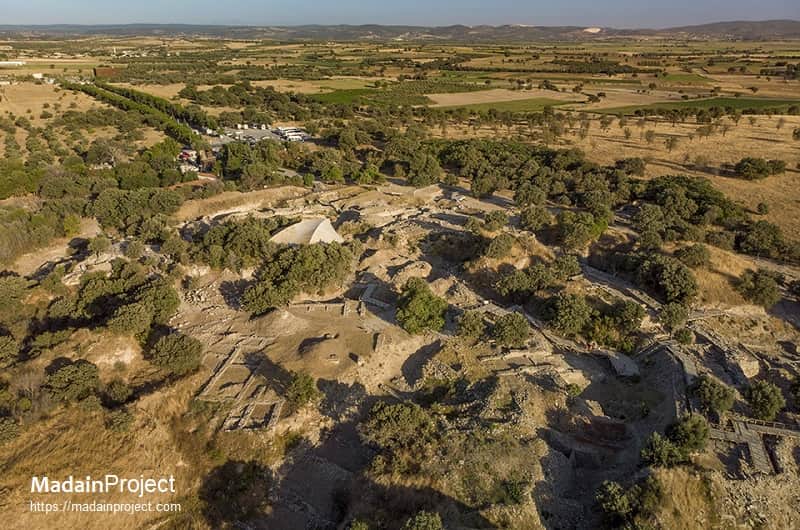
Hisarlık is the modern name for the archaeological mound located in present-day Çanakkale Province, Turkey, identified by scholars as the site of ancient Troy. The mound contains a deep stratigraphy reflecting thousands of years of continuous occupation, from the early third millennium BCE to the Roman era. Excavations at Hisarlık have revealed the architectural and material remains corresponding to the historically and mythologically significant city, including its fortification systems, domestic structures, and imported artifacts. Read more

Ancient Dara was an important East Roman fortress city in northern Mesopotamia on the border with the Sassanid Empire. Because of its great strategic importance, it featured prominently in the Roman-Persian conflicts (in 530, 540, 544, 573, and 604 CE). Read more

The ancient Çatalhöyük was inhabited around 9,000 years ago, housing up to 8,000 people who lived in a large town setting. Çatalhöyük features two large mounds covering an area of approximately 37 hectares, with the taller eastern mound containing 18 levels of Neolithic occupation dating back to around 7400 BCE. Read more

Strategically situated in the Pisidian region, Antioch flourished as a crossroads of trade and cultural exchange. Its position along major trade routes facilitated the blending of Hellenistic and Anatolian influences, shaping a unique identity for the city. Antioch's prosperity was further enhanced when it became a Roman colony in the 1st century BCE under Augustus. Read more
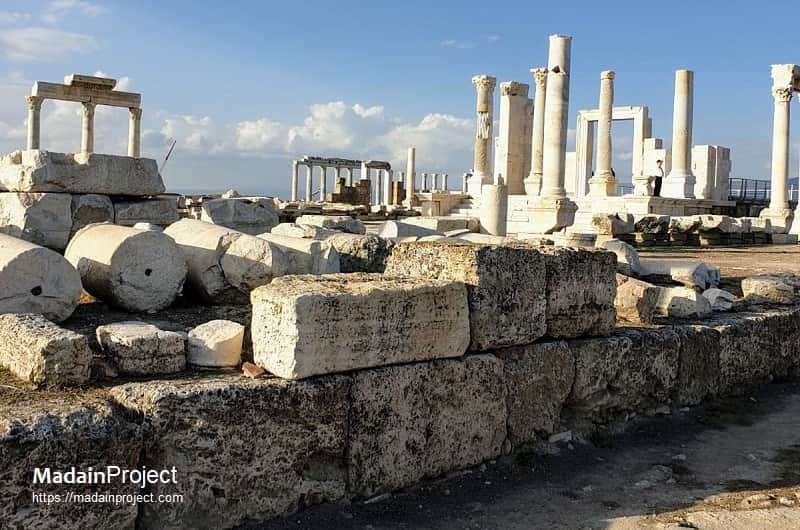
Laodicea on the Lycus (Laodikeia) was a prosperous ancient Greek city of Asia Minor, later incorporated into the Roman Empire. Founded in the Hellenistic period, it flourished as a commercial, cultural, and administrative centre, particularly under Roman rule when it became part of the province of Phrygia Pacatiana. Known for its wealth, textile production, and strategic position in regional trade, Laodicea played a prominent role in the political and economic life of western Anatolia from its foundation through the Byzantine era. Read more

Didyma was an ancient Greek sanctuary and oracle dedicated to the god Apollo, located in Ionia on the coast of modern-day Turkey. Though it was not a city itself, it was one of the most important religious sites in the Hellenic world, second in fame only to the oracle at Delphi. Didyma was closely connected to the nearby city of Miletus by a 20-kilometer-long "Sacred Way", which was used for ceremonial processions. Read more
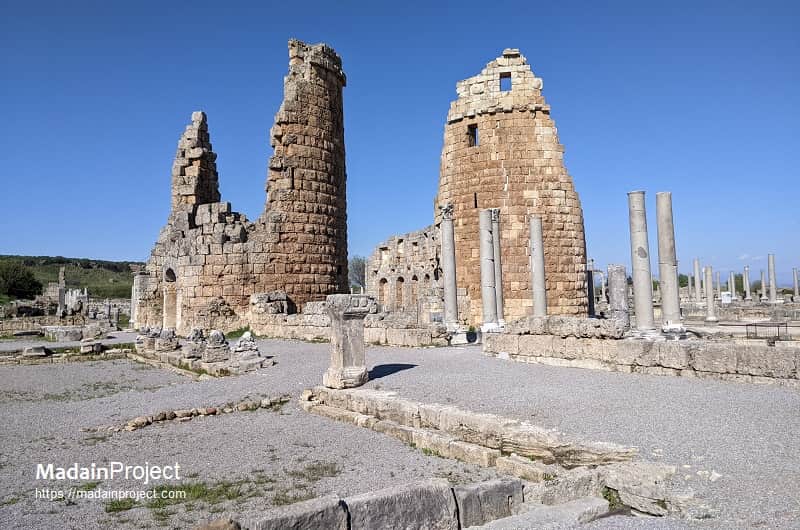
The ancient city of Perga, or Perge, was a thriving metropolis in the ancient region of Pamphylia, located in modern-day Antalya, Turkey. Originally a Hittite settlement, Perga was later shaped by Greek and Roman influences, becoming the capital of the Roman province of Pamphylia Secunda. Its golden age occurred during Roman rule from the 1st to 3rd centuries CE, and its impressive, well-preserved ruins reflect this prosperity. Read more
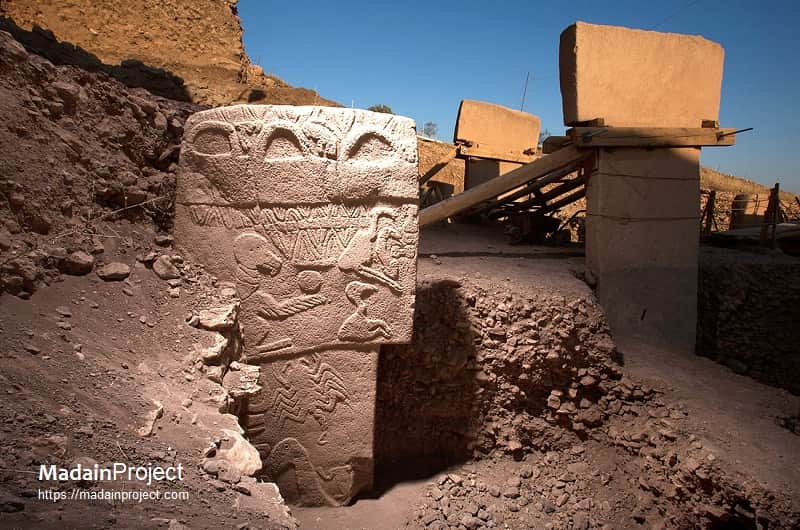
Göbekli Tepe is a pivotal Pre-Pottery Neolithic archaeological site in southeastern Anatolia, Turkey, dated between approximately 9600 and 8200 BCE. It is renowned for its monumental, T-shaped limestone pillars, some reaching 5.5 meters in height and weighing up to 50 tons, arranged in circular enclosures. These megalithic structures feature intricate low and high reliefs depicting a wide array of wild animals, abstract symbols, and stylized anthropomorphic figures. Read more
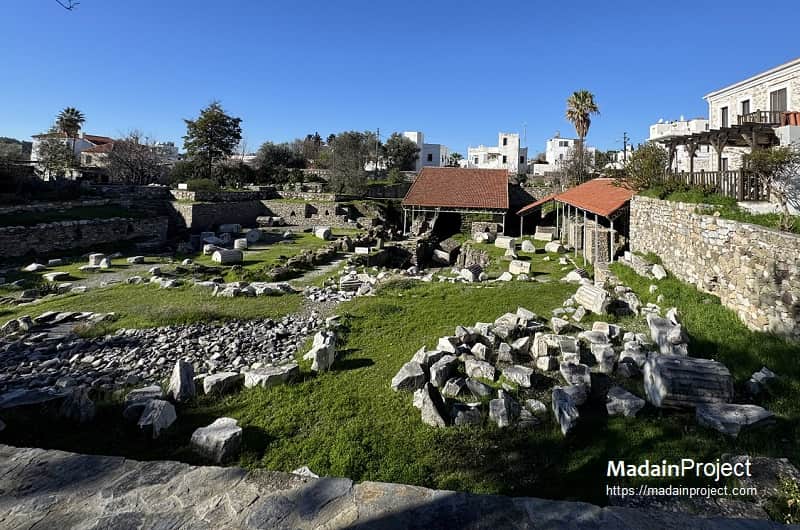
Halicarnassus was a prominent coastal city of ancient Caria, located on the southwestern shore of Asia Minor, in modern-day Bodrum, Turkey. It was strategically positioned on a natural harbor, which facilitated trade, naval activity, and cultural exchange across the Aegean and Mediterranean regions. The city was renowned for its architectural grandeur, most famously the Mausoleum of Halicarnassus. Read more

Originally founded by the Phrygians in the seventh century BCE, Bursa came under Bithynian control in the fourth century BCE and later became part of the Roman Empire. The city's strategic location, nestled at the foot of Mount Uludağ (ancient Mount Olympus), contributed to its economic and military importance during various historical periods. In addition to its historical significance, Bursa is known for its natural beauty, surrounded by forests. Read more

Sultanhani, located in central Turkey, is renowned for its historical caravanserai, a distinctive type of roadside inn that played a crucial role in facilitating trade and travel along ancient trade routes. The caravanserai in Sultanhani, named after the town, stands as a testament to the significance of such establishments in the medieval period. These structures played a crucial role in fostering economic activities and cultural exchange along the Silk Road and other trade routes. Read more

The city's historical significance extends beyond prehistoric times, having been part of various empires and civilizations throughout the ages. Şanlıurfa has witnessed the rise and fall of the Sumerians, Akkadians, Babylonians, Persians, and Romans. According to local legend, the city of Urfa is the site of Abraham's (prophet Ibrahim) birth and the episode when he was cast into the fire by King Nimrod, only for the flames to miraculously transform into water and the logs into fish. Read more
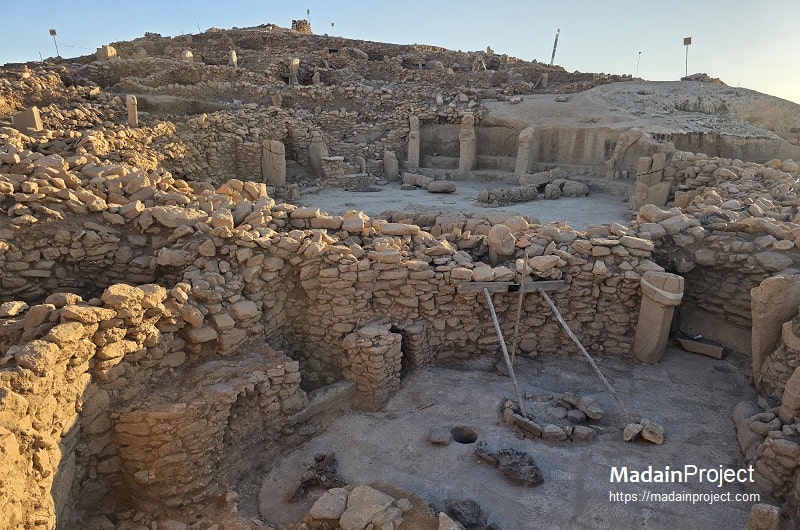
Karahan Tepe is a significant Pre-Pottery Neolithic archaeological site in Şanlıurfa, Turkey, dating to approximately 9750–8000 BCE and belonging to the larger Taş Tepeler network of ancient settlements. Notable structure (AB) featuring carved phallic-shaped pillars surrounding a large, serpentine-necked human head emerging from the rock face. Unlike the predominantly ritual focus of Göbekli Tepe, Karahan Tepe shows evidence of both ceremonial and domestic activities Read more
Signup for our monthly newsletter / online magazine.
No spam, we promise.